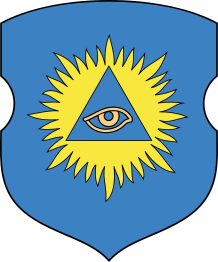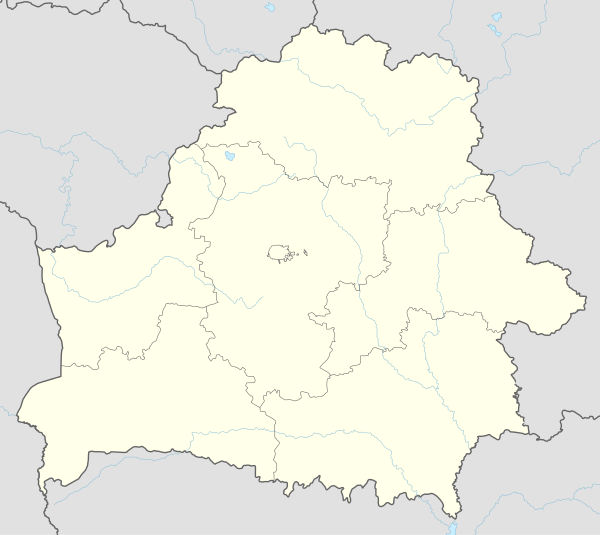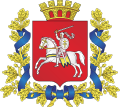Braslaw
Braslaw or Braslaŭ (Belarusian: Браслаў, romanized: Braslaŭ; Russian: Браслав, romanized: Braslav; Polish: Brasław; Lithuanian: Breslauja) is a town in the Vitebsk Region of Belarus, an administrative center of the Braslaw District.
Braslaŭ | |
|---|---|
City | |
| Браслаў | |
 Flag  Coat of arms | |
 Braslaŭ Location of Braslaŭ | |
| Coordinates: 55°38′20.82″N 27°1′54.58″E |
History
The town was first mentioned in 1065 as a castle in the border of the Polatsk Principality with the Lithuanian tribes. Archaeologists excavated a Viking settlement in the village of Maskachichy not far from the town. They think that Viking mercenaries were used as dependable border guards. In the 14th century, Braslaw was incorporated into the Grand Duchy of Lithuania and, in fact, became an important fortification near the disturbing line with the Livonian Order in the 14 – 15th centuries. In 1500, Alexander Jagiellon privileged the townsfolk with a limited self-administration right and the coat of arms. In 1506, the castle was presented to the widowed queen Yelena Ivanovna, the daughter of Ivan III of Russia and wife of Alexander Jagiellon, who founded here an Orthodox Christian nunnery. The town was much developed thanks to its praepostor Lev Sapeha and the king Stanisław August Poniatowski.
.jpg)
In 1795 - 1919, Braslaw was part of Russian Empire. It became an uyezd center (county seat) in Vilna Governorate in 1795, later in Kovno Governorate in 1843 except brief French occupation in 1812. It was occupied by German Empire for 10 months in 1918. According to the Treaty of Riga, it became Polish. It was powiat center (county seat) in Wilno Voivodeship. In 1939, it was appended to the Belarusian Soviet Socialist Republic.
Around 3,000 Jews lived in Braslav at the eve of World War II, more than the half of the inhabitants.
It was occupied by Nazi Germany between 27 June 1941 and 6 June 1944 and administered as a part of Generalbezirk Weißruthenien of Reichskommissariat Ostland. In April 1942, a ghetto was established. The liquidation of the ghetto began on June 3, 1942. Many Jews tried to escape but around 2,000 Jews were arrested and shot in ditches that had been prepared. In late 1942, the Jews from the nearby village of Opsa were gathered in Braslav. They were killed in March 1943.[1]
It was a raion center firstly in Vileyka Voblast, later in Polatsk Voblast between 1944 and 1954 and finally in Molodechno Voblast between 1954 and 1960 before passing to Vitebsk one. Since the 1920s, Braslaw was developed as a cheap summer resort. In 1995, it accommodated the main office of the National Park of the Braslaw Lakes.
Population
In 1948, Braslaw had a population in excess of 2000 people. In 2009, the total population of Braslaw was 9,516 people.
References
- "Execution Sites of Jewish Victims Investigated by Yahad-In Unum". Yahad Interactive Map. Retrieved 6 January 2015.
External links
| Wikimedia Commons has media related to Braslaŭ. |
- Official website
- Photos on Radzima.org
- Braslav at KehilaLinks
- Braslaw, Belarus at JewishGen
